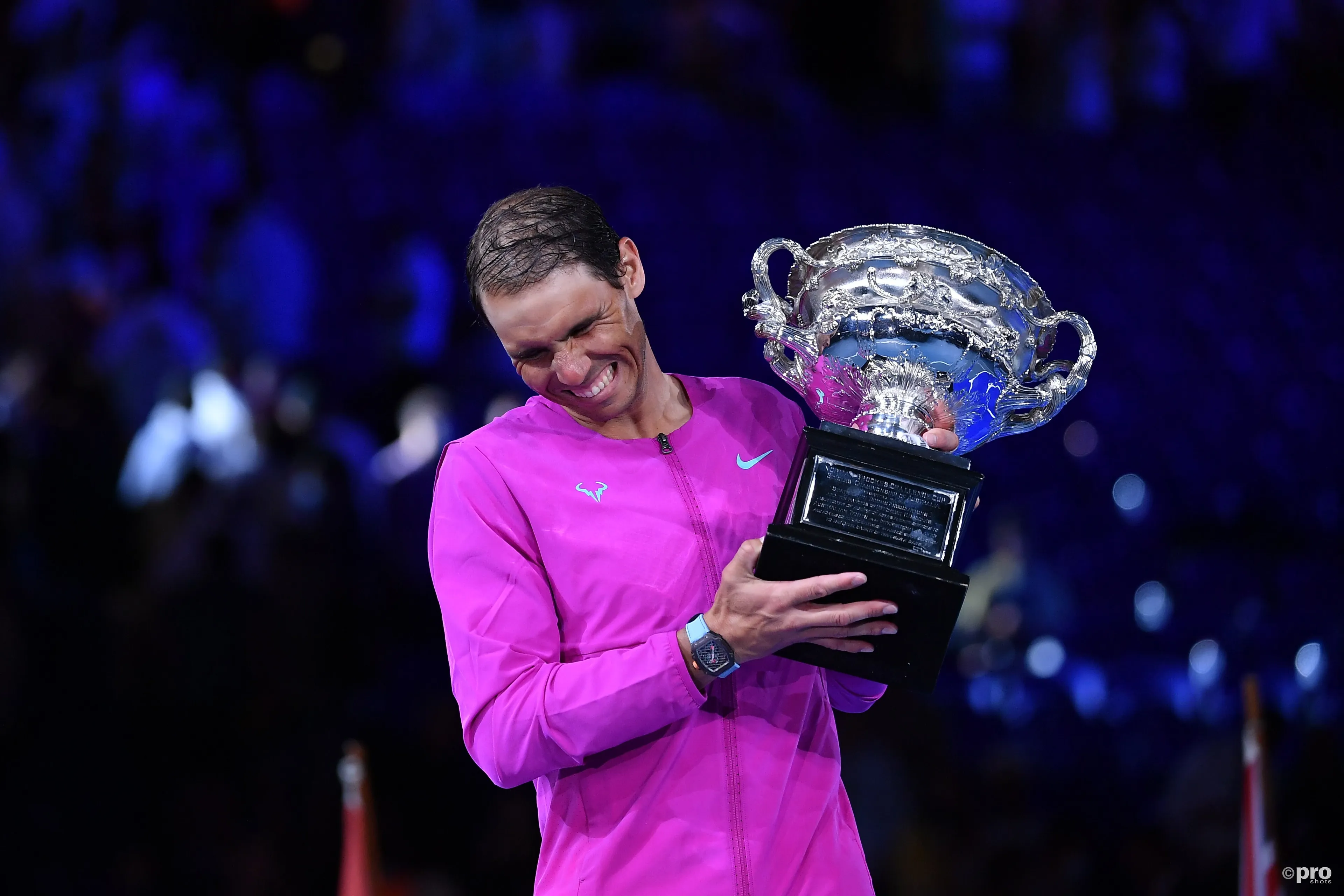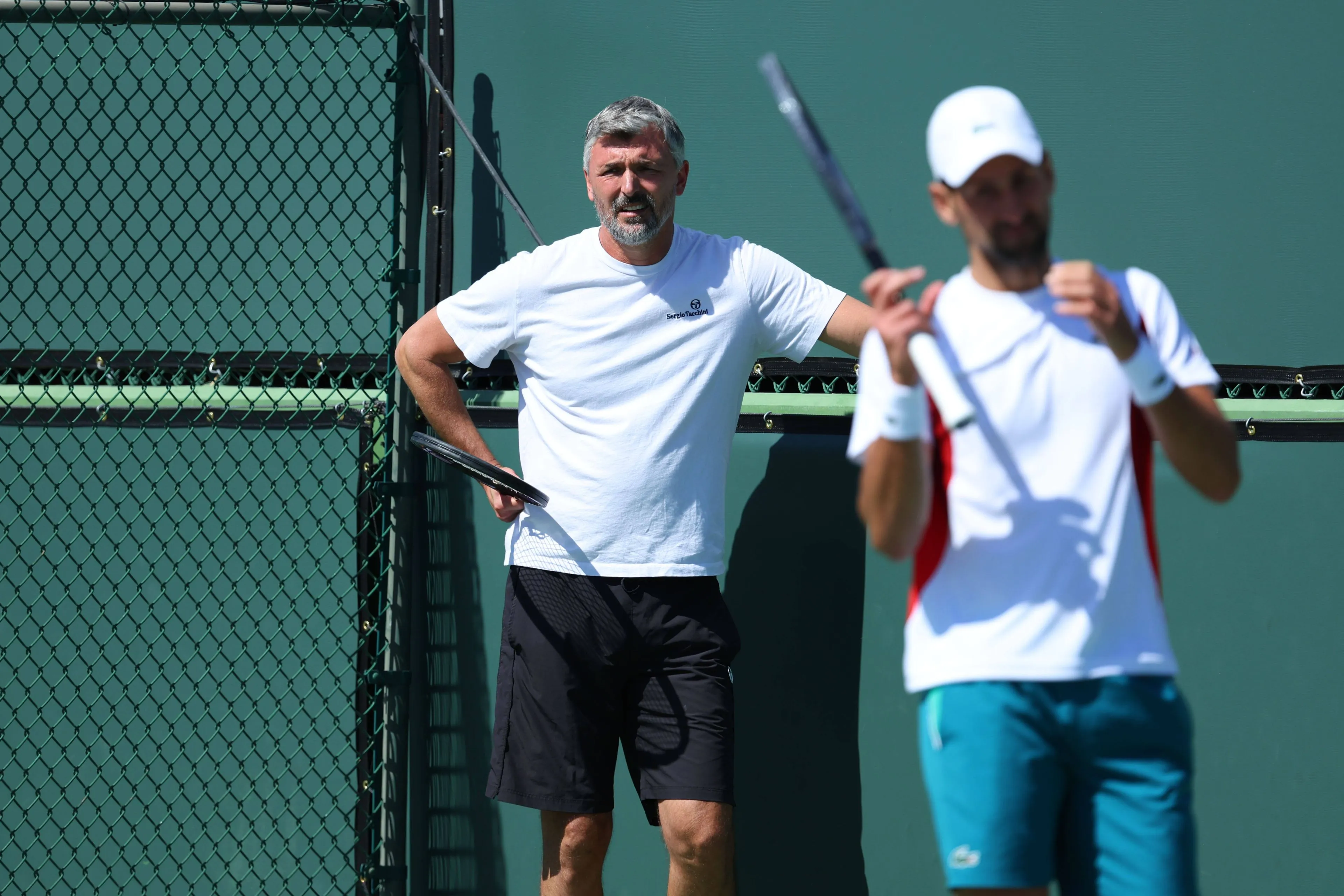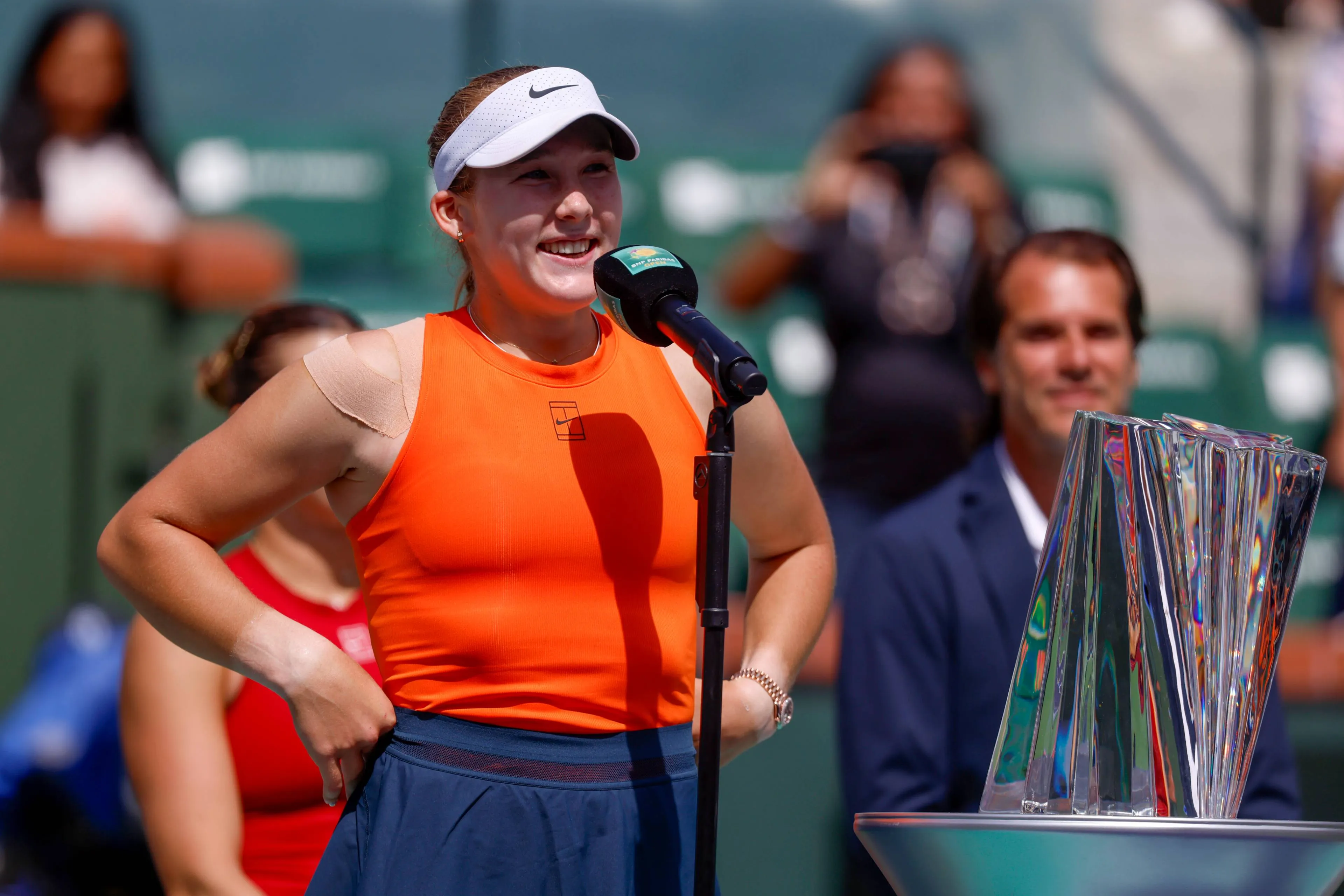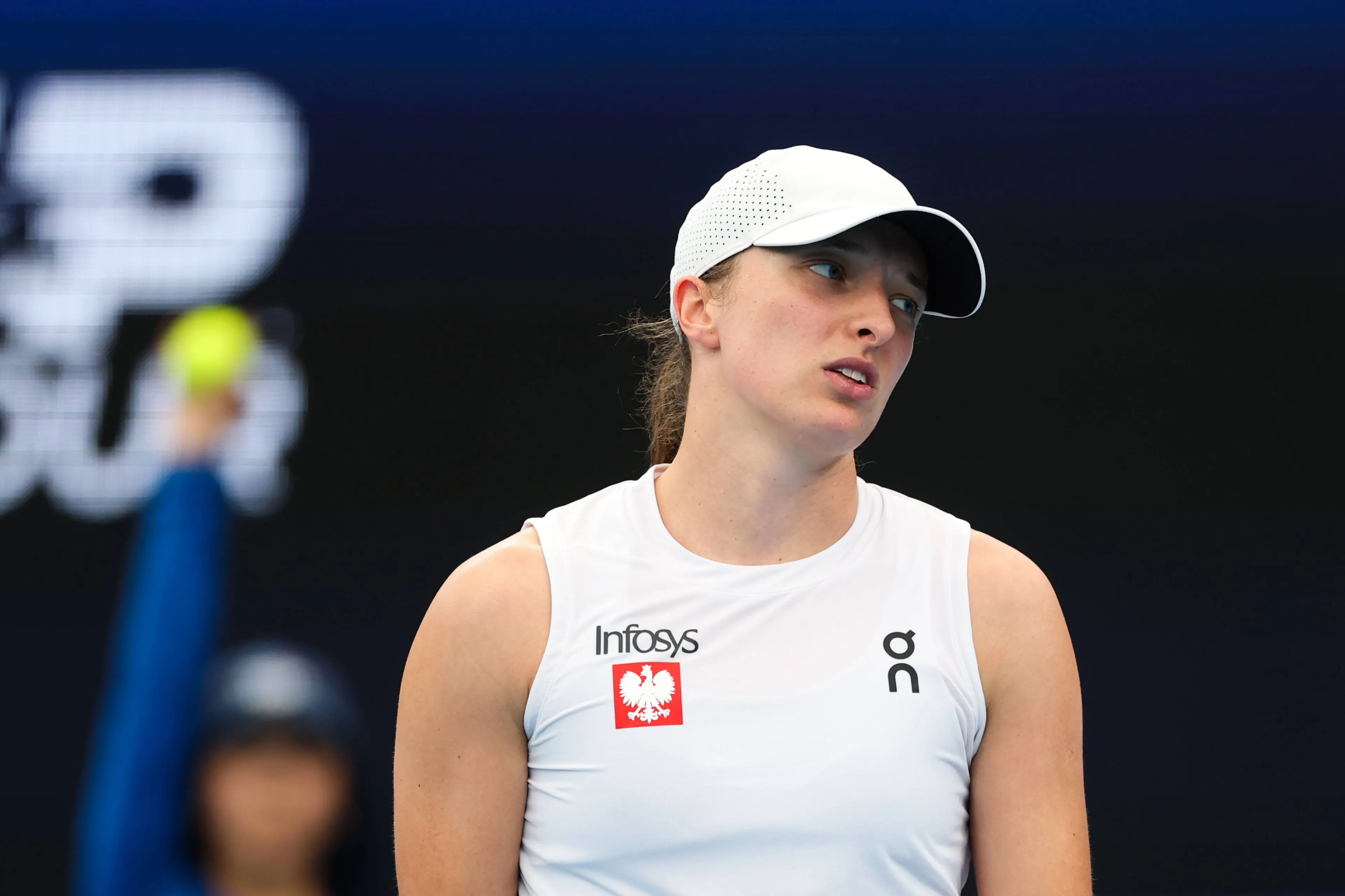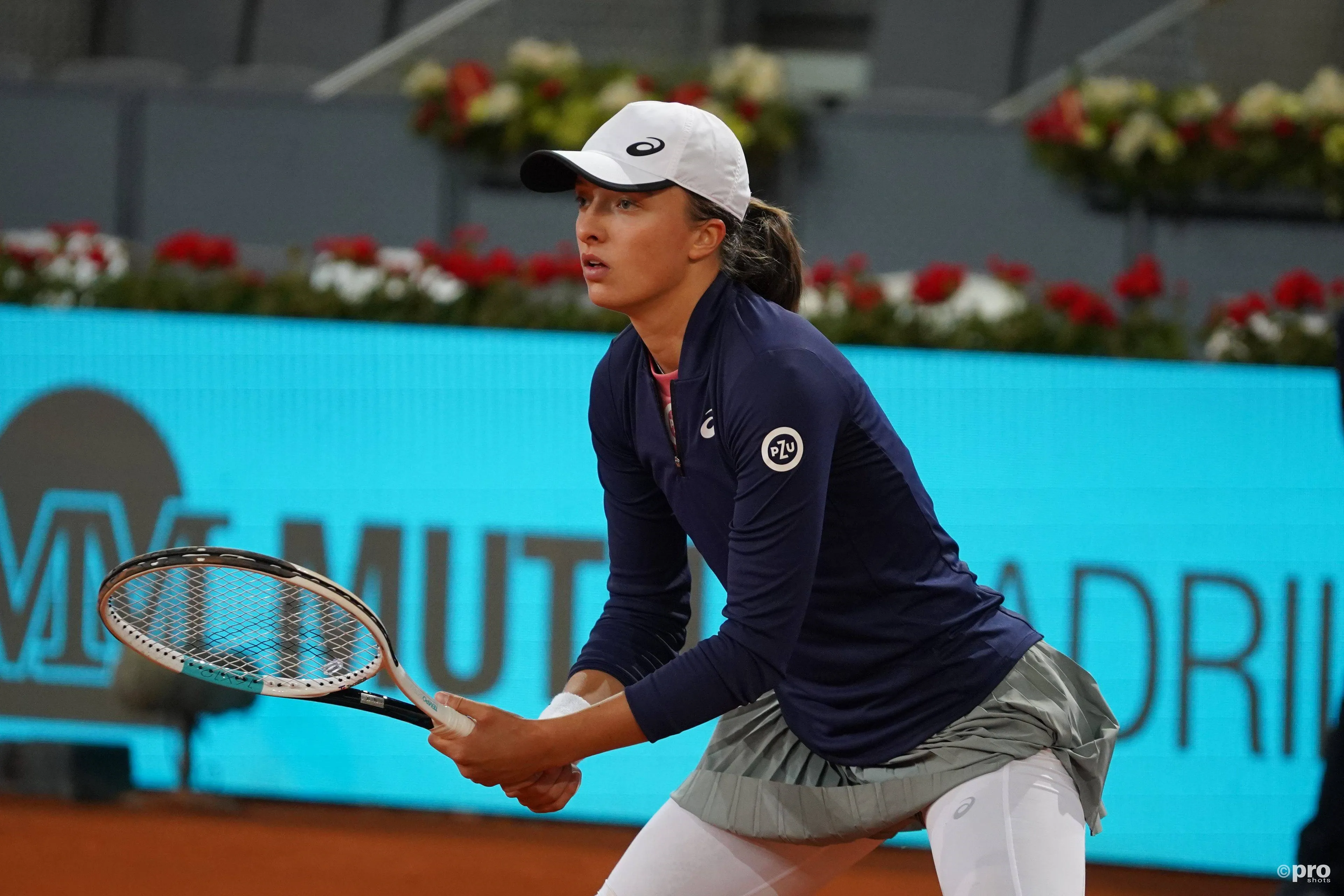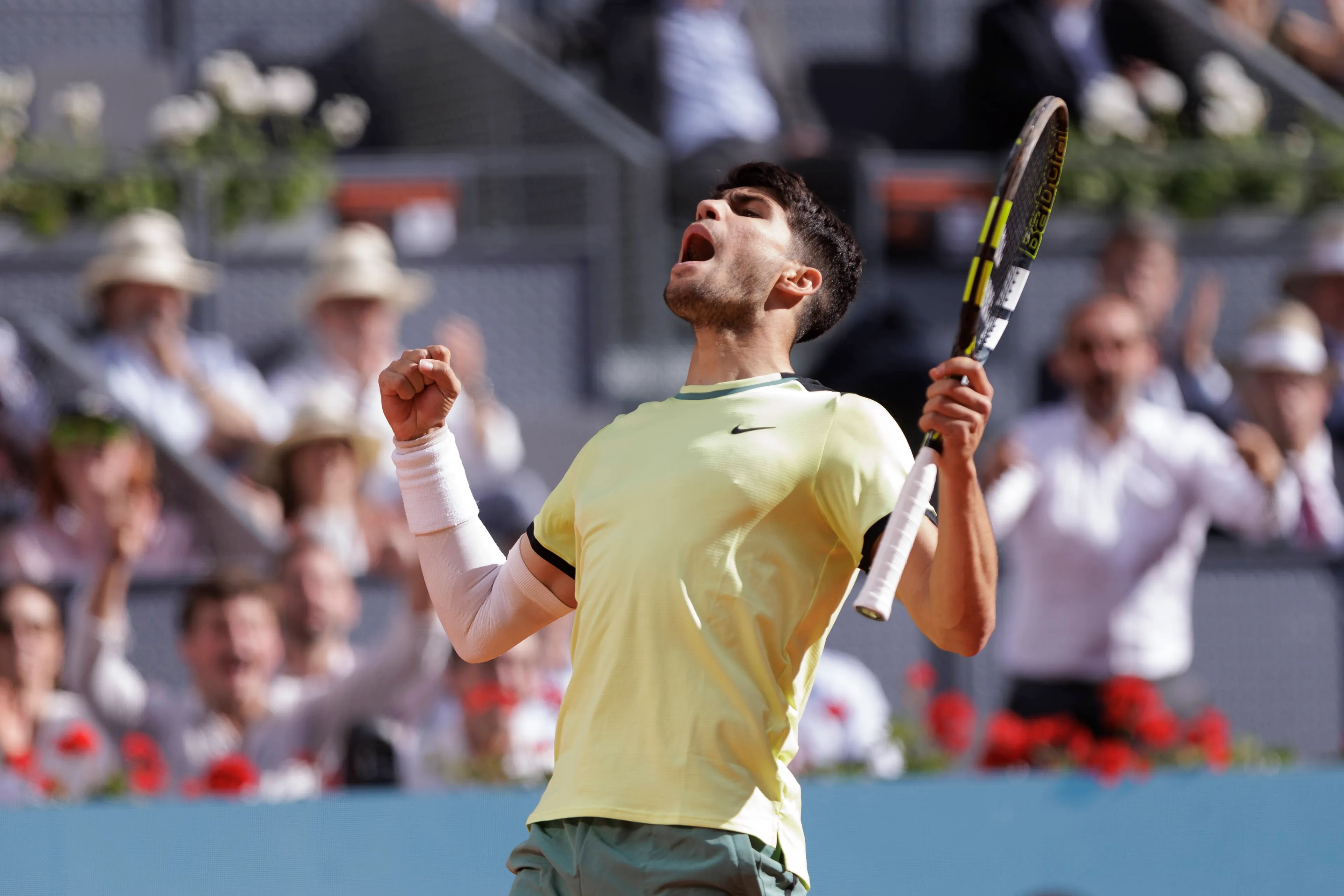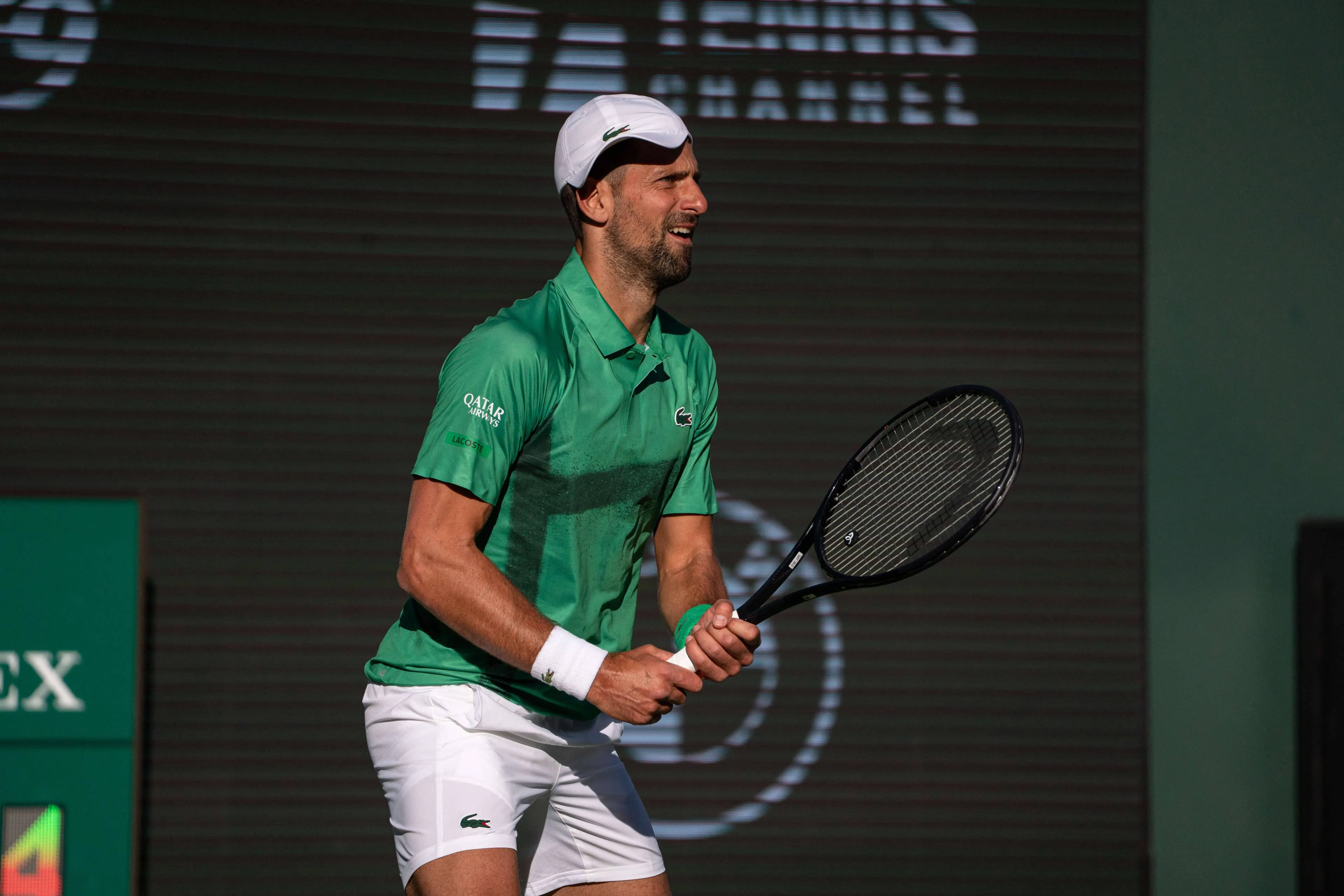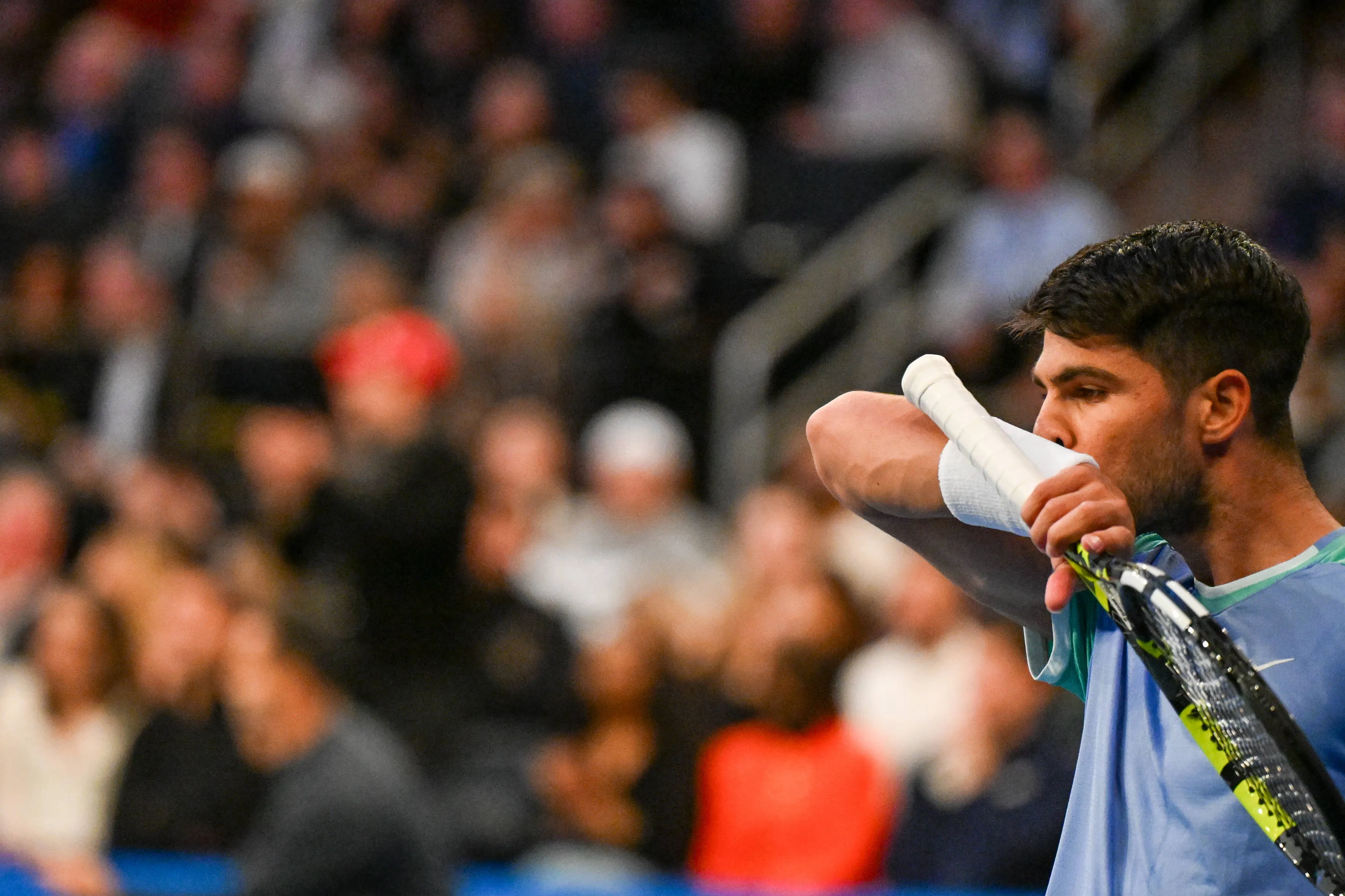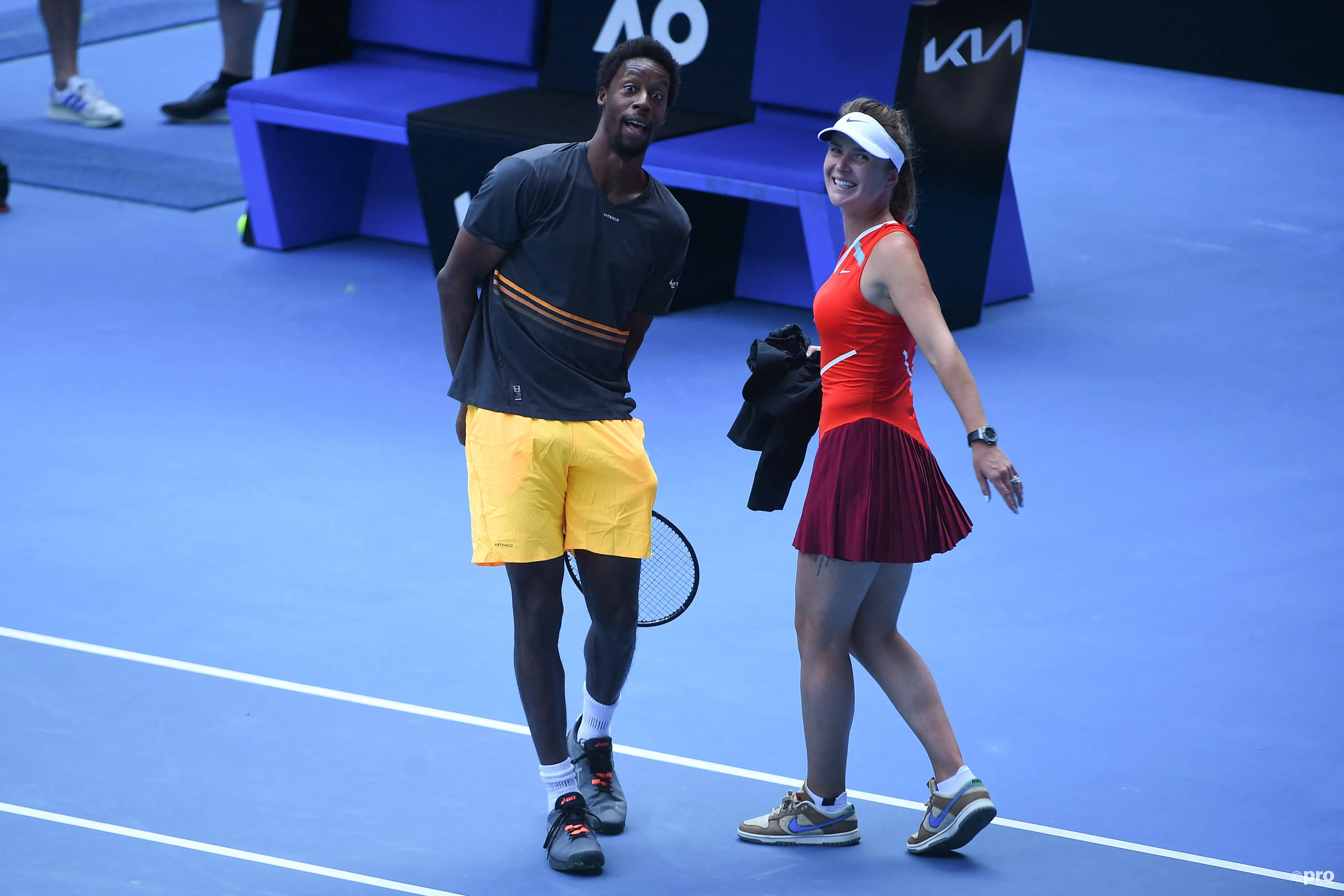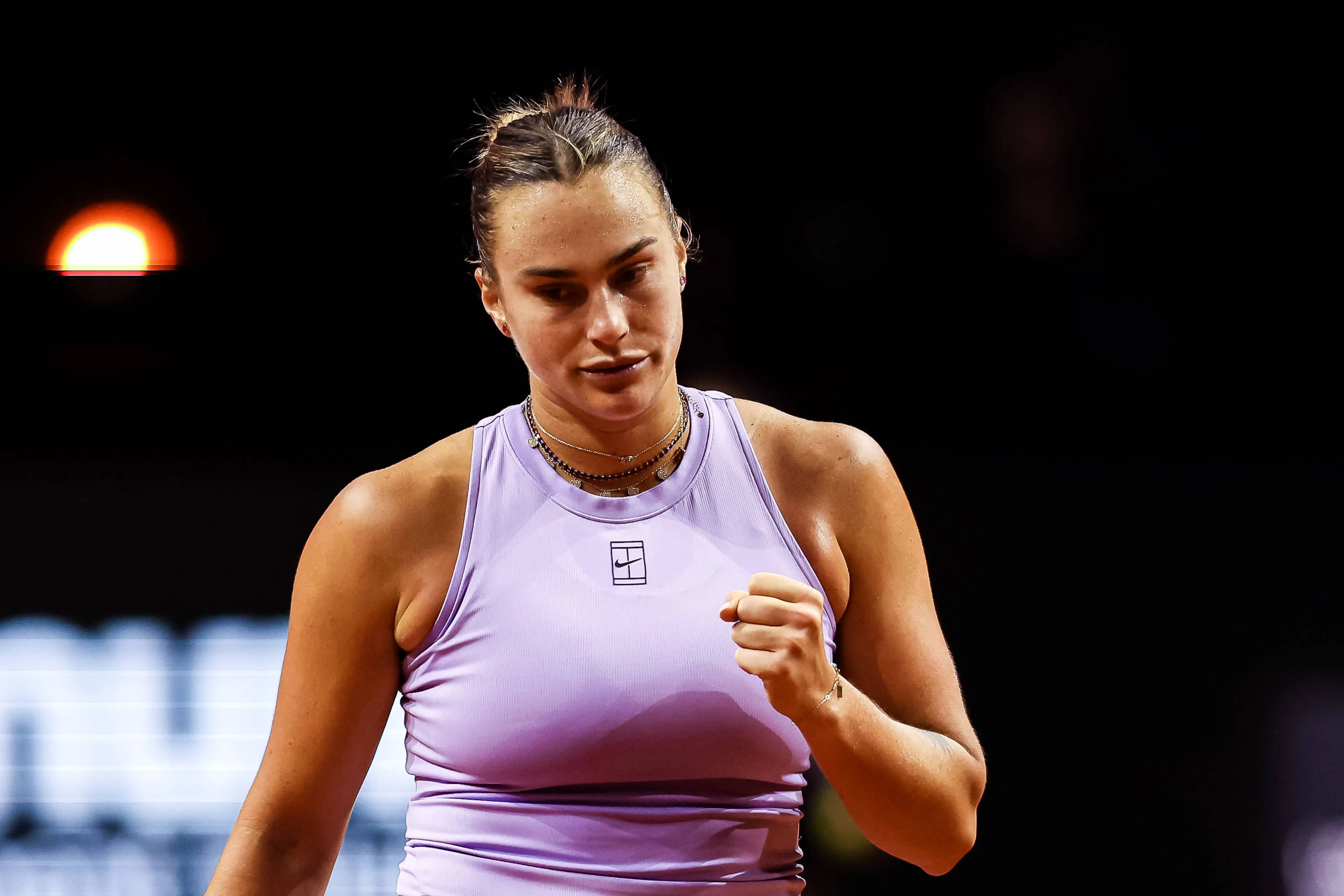Australian Open
Current Australian Open Champions, and Key Event Details
| Current title holder ATP | Jannik Sinner (Italy) |
| Current title holder WTA | Madison Keys (USA) |
| Date | January 6 - 25, 2025 |
| Category | Grand Slam, or more precise Major |
| Location | Melbourne, Australia |
| Venue | Melbourne Park |
| ATP Players | 128 - Men’s Entry List of the AO 2025 |
| WTA Players | 128 - Women’s Entry List of the AO 2025 |
| Prize Money 2025 | Australian Open Earnings |
| ATP Draw | Men's Draw AO2025 |
| WTA Draw | Women's Draw AO2025 |
| Fun fact for Fans | The AO holds the record for the highest attendance of any tennis tournament ever staged with 812,174 people attending the 2020 edition. |
| Preview ATP | Preview Australian Open 2025 |
| Preview WTA | to be published |
| TV Guide | Worldwide - TV Guide for AO 2025 |
| Official | Open Australian Open Webpage |
| Tournament Centre | Tournament Centre AO 2025 |
| Match Report Final ATP | Jannik Sinner vs. Alexander Zverev |
| Match Report Final WTA | Madison Keys vs Aryna Sabalenka |

AO 2025 image generated using OpenAI's DALL·E system
As one of the 4 Majors the Australian Open (short AO2025) is a professional combined ATP and WTA tennis tournament. The event is the biggest Australian tournament watched by tennis fans all over the world, and is played every year in Melbourne.
Edition of 2024
Date: 14 to 28 January 2024All qualifications results of the AO2024 WTA
Category: Grand Slam (ATP / WTA)
Draw Size: 128S/64D (ATP / WTA)
Prize Money Australian Open ATP & WTA 2024
2024 Draw Australian Open ATP
2024 Draw Australian Open WTA
TV GUIDE Australian Open 2024
Category: Grand Slam (ATP / WTA)
Draw Size: 128S/64D (ATP / WTA)
Prize Money Australian Open ATP & WTA 2024
2024 Draw Australian Open ATP
2024 Draw Australian Open WTA
TV GUIDE Australian Open 2024
The title holders in 2024 are Jannik Sinner and Aryna Sabalenka. Nadal withdrew in 2024 from competing after injury problems in Brisbane while Emma Raducanu miraculously made it into the main draw due to 6 WTA players not entering the AO2024 major. Aryna Sabalenka defended her 2023 title by defeating Qinweng Zheng in straight sets, while Italian Jannik Sinner defeated Russian Daniil Medvedev after being 2 sets down.
Early history of the AO
The tournament began in 1905 as the Australasian Championships, and was held in Melbourne at the Warehouseman’s Cricket Ground. The Australian Open has been staged in five different cities in Australia, as well as in New Zealand twice (1906 and 1912). It was not originally planned to become a massive international tournament, but in 1923, the International Lawn Tennis Federation decided that this would be a worldwide event. In 1927, the name was changed to the Australian Championships, and in 1969, it became the Australian Open. The Australian Open was not held between 1916 and 1918, or 1940 and 1945, due to international conflicts happening at the time.
The tournament was played on grass courts until 1988, when it moved to its current location at Melbourne Park, which features hard courts and retractable roofs for indoor play during wet weather or extreme heat. The Australian Open is known for its fast-paced and aggressive style of play, as well as its high attendance and popularity among fans and players. The tournament has witnessed many memorable matches and champions over the years, such as Rod Laver, Margaret Court, Martina Navratilova, Steffi Graf, and many more.
The tournament is scheduled after a string of tournaments organized down under at the beginning of the year including the United Cup, Brisbane International, the ASB Classic, Hobart International, and after Adelaide International.
The tournament is scheduled after a string of tournaments organized down under at the beginning of the year including the United Cup, Brisbane International, the ASB Classic, Hobart International, and after Adelaide International.
Tennis Legends in the Australian Open since 1980
In 1980, the Australian Open was still played on grass courts at the Kooyong Stadium in Melbourne, and it was the last Grand Slam of the year. The men’s singles champion was Brian Teacher, who defeated Kim Warwick in four sets, while the women’s singles champion was Hana Mandlíková, who defeated Wendy Turnbull in three sets. In 1981, the tournament moved to a January date, becoming the first Grand Slam of the year. The men’s singles champion was Johan Kriek, who defended his title by beating Steve Denton in five sets, while the women’s singles champion was Martina Navratilova, who beat Chris Evert in three sets.
In 1988, the Australian Open moved to a new venue, the Melbourne Park, and switched to hard courts. The men’s singles champion was Mats Wilander, who became the only player to win the event on both grass and hard courts, by defeating Pat Cash in five sets. The women’s singles champion was Steffi Graf, who completed a calendar year Grand Slam by beating Chris Evert in two sets. In 1989, the tournament introduced a retractable roof for the first time, allowing play to continue in any weather conditions. The men’s singles champion was Ivan Lendl, who beat Miloslav Mečíř in three sets, while the women’s singles champion was Steffi Graf, who defended her title by beating Helena Suková in two sets.
In 1993, the Australian Open celebrated its centenary, and also witnessed a historic achievement by Monica Seles, who won her third consecutive title by beating Steffi Graf in three sets. Seles became the first woman to win four Grand Slam titles in a row since Margaret Court in 1970-712. The men’s singles champion was Jim Courier, who also defended his title by beating Stefan Edberg in four sets1. In 1995, the tournament saw another milestone by Andre Agassi, who won his first Australian Open title by beating Pete Sampras in four sets. Agassi became the first man to win all four Grand Slam titles on three different surfaces: clay, grass and hard courts. The women’s singles champion was Mary Pierce, who beat Arantxa Sánchez Vicario in two sets.
The AO's history since 2000
In 2000, the Australian Open marked the dawn of a new millennium and a new era of dominance by two players: Martina Hingis and Andre Agassi. Hingis won her third consecutive title by beating Lindsay Davenport in two sets, while Agassi won his second consecutive title by beating Yevgeny Kafelnikov in three sets. Both players would go on to win four Australian Open titles each in their careers . In 2003, the tournament witnessed another historic feat by Serena Williams, who completed a “Serena Slam” by winning her fourth consecutive Grand Slam title. Williams beat her sister Venus Williams in three sets to win her first Australian Open title. The men’s singles champion was Andre Agassi, who beat Rainer Schüttler in three sets to win his fourth and final Australian Open title.
In 2007, the Australian Open introduced a new surface called Plexicushion, which replaced the previous Rebound Ace surface. The new surface was designed to be more consistent and durable than the old one. The men’s singles champion was Roger Federer, who beat Fernando González in three sets to win his third Australian Open title. Federer also equaled Björn Borg’s record of winning a Grand Slam title without dropping a set. The women’s singles champion was Serena Williams, who beat Maria Sharapova in two sets to win her third Australian Open title. Williams also became the lowest-ranked player (81st) to win a Grand Slam title since Chris O’Neil (111th) at the 1978 Australian Open.
In 2010, the Australian Open celebrated its 25th anniversary at Melbourne Park, and also saw two new champions emerge: Roger Federer and Serena Williams. Federer won his fourth Australian Open title by beating Andy Murray in three sets, while Williams won her fifth Australian Open title by beating Justine Henin in three sets1. Both players would go on to win six Australian Open titles each in their careers . In 2012, the tournament featured one of the longest and most epic matches ever played: the men’s singles final between Novak Djokovic and Rafael Nadal. Djokovic prevailed over Nadal in five sets, after five hours and 53 minutes of play, the longest Grand Slam final in history. Djokovic won his third Australian Open title, while Nadal became the first man to lose three consecutive Grand Slam finals. The women’s singles champion was Victoria Azarenka, who beat Maria Sharapova in two sets to win her first Grand Slam title.
In 2017, the Australian Open introduced a new surface called GreenSet, which replaced the previous Plexicushion surface. The new surface was designed to be more environmentally friendly and sustainable than the old one. The tournament also witnessed a remarkable comeback by two legends: Roger Federer and Serena Williams. Federer won his fifth Australian Open title by beating Rafael Nadal in five sets, after missing six months of the previous season due to a knee injury. Williams won her seventh Australian Open title by beating her sister Venus Williams in two sets, while being eight weeks pregnant with her daughter. Both players also increased their records of most Grand Slam titles in men’s and women’s tennis: Federer with 18 and Williams with 23.
In 2020, the Australian Open faced a major challenge due to the COVID-19 pandemic, which forced the tournament to be postponed by three weeks and to limit the number of spectators and participants. The tournament also introduced a new innovation: electronic line calling, which replaced human line judges on all courts except the main show courts. The men’s singles champion was Novak Djokovic, who beat Daniil Medvedev in three sets to win his ninth Australian Open title, a record for any player in the Open Era. Djokovic also became the second man after Roger Federer to win at least eight titles at two different Grand Slam events. The women’s singles champion was Naomi Osaka, who beat Jennifer Brady in two sets to win her second Australian Open title and her fourth Grand Slam title overall. Osaka also became the first woman since Monica Seles to win her first four Grand Slam finals.
Djokovic vs Australia: The Epic Court Battle That Rocked the Tennis World
One of the biggest controversies in the tennis world at the time was the situation of Novak Djokovic, the world number one and defending champion of the Australian Open. Djokovic, who refused to be vaccinated against COVID-19, had been detained upon arriving in Australia on January 5, 2022 and had his visa canceled.
Djokovic had claimed that he had received a medical exemption from vaccination by an independent panel, which had allowed him to enter the country and compete in the tournament. However, the Australian authorities had disputed his exemption and had accused him of providing false and misleading information on his travel declaration form. Djokovic had then been held in a quarantine hotel for several days, while his lawyers had appealed the decision in court.
On January 10, a judge had ruled in favor of Djokovic and had ordered his release from detention, saying that he had not been given a fair opportunity to challenge the visa cancellation. The judge had also said that Djokovic’s exemption was valid and that he had not breached any health orders. However, the Australian government had said that it would review the ruling and that it still had the power to deport Djokovic on public interest grounds.
The controversy had sparked a heated debate among Australians, tennis players, and fans around the world. Many had criticized Djokovic for his anti-vaccination stance and his apparent disregard for the health and safety of others. Others defended Djokovic for his right to choose what’s best for his body and his exceptional achievements in tennis. Some had also questioned the fairness and transparency of the exemption process and the visa system.
At that time, Djokovic’s fate remained uncertain. He was still waiting for a final decision from the immigration minister, who could have revoked his visa at any time before the tournament started on January 17. If he had been allowed to play, he would have faced a hostile crowd and a tough draw. If he had been deported, he would have missed a chance to make history by winning his 21st Grand Slam title and breaking the record he currently shared with Roger Federer and Rafael Nadal. In the end Djokovic was ordered to leave Australia. Nadal went on to win the tournaiment against Daniil Medvedev. Also in 2022 Matteo Berrettini became the first Italian man to reach the semifinals of the Australian Open.
One year later Djokovic prevailed and won the 2023 and his 10th Australian Open title.
Nadal will not be present at the AO2024 edition due to injury.
One year later Djokovic prevailed and won the 2023 and his 10th Australian Open title.
Nadal will not be present at the AO2024 edition due to injury.
Most AO titles:
ATP: Novak Djokovic (10) - 2008, 2011, 2012, 2013, 2015, 2016, 2019, 2020, 2021, 2023
WTA: Serena Williams (7) - 2003, 2005, 2007, 2009, 2010, 2015, 2017
Men's Australian Open final matches:
2022: Rafael Nadal def. Daniil Medvedev, 2–6, 6–7(5–7), 6–4, 6–4, 7–5
2021: Novak Djokovic def. Daniil Medvedev 7-5, 6-2, 6-2
2020: Novak Djokovic def. Dominic Thiem 6–4, 4–6, 2–6, 6–3, 6–4
2019: Novak Djokovic def. Rafael Nadal 6–3, 6–2, 6–3
2018: Roger Federer def. Marin Čilić 6–2, 6–7(5–7), 6–3, 3–6, 6–1
2017: Roger Federer def. Rafael Nadal 6–4, 3–6, 6–1, 3–6, 6–3
2016: Novak Djokovic def. Andy Murray 6–1, 7–5, 7–6(7–3)
2015: Novak Djokovic def. Andy Murray 7–6(7–5), 6–7(4–7), 6–3, 6–0
2014: Stan Wawrinka def. Rafael Nadal 6–3, 6–2, 3–6, 6–3
2013: Novak Djokovic def. Andy Murray 6–7(2–7), 7–6(7–3), 6–3, 6–2
2012: Novak Djokovic def. Rafael Nadal 5–7, 6–4, 6–2, 6–7(5–7), 7–5
2011: Novak Djokovic def. Andy Murray 6–4, 6–2, 6–3
2010: Roger Federer def. Andy Murray 6–3, 6–4, 7–6(13–11)
2021: Novak Djokovic def. Daniil Medvedev 7-5, 6-2, 6-2
2020: Novak Djokovic def. Dominic Thiem 6–4, 4–6, 2–6, 6–3, 6–4
2019: Novak Djokovic def. Rafael Nadal 6–3, 6–2, 6–3
2018: Roger Federer def. Marin Čilić 6–2, 6–7(5–7), 6–3, 3–6, 6–1
2017: Roger Federer def. Rafael Nadal 6–4, 3–6, 6–1, 3–6, 6–3
2016: Novak Djokovic def. Andy Murray 6–1, 7–5, 7–6(7–3)
2015: Novak Djokovic def. Andy Murray 7–6(7–5), 6–7(4–7), 6–3, 6–0
2014: Stan Wawrinka def. Rafael Nadal 6–3, 6–2, 3–6, 6–3
2013: Novak Djokovic def. Andy Murray 6–7(2–7), 7–6(7–3), 6–3, 6–2
2012: Novak Djokovic def. Rafael Nadal 5–7, 6–4, 6–2, 6–7(5–7), 7–5
2011: Novak Djokovic def. Andy Murray 6–4, 6–2, 6–3
2010: Roger Federer def. Andy Murray 6–3, 6–4, 7–6(13–11)
Women's Australian Open final matches:
2022: Ashleigh Barty def. Danielle Collins, 6–3, 7–6(7–2)
2021: Naomi Osaka def. Jennifer Brady 6-4, 6-3
2020: Sofia Kenin def. Garbiñe Muguruza 4–6, 6–2, 6–22019: Naomi Osaka def. Petra Kvitová 7–6(7–2), 5–7, 6–4
2018: Caroline Wozniacki def. Simona Halep 7–6(7–2), 3–6, 6–4
2017: Serena Williams def. Venus Williams 6–4, 6–4
2016: Angelique Kerber def. Serena Williams 6–4, 3–6, 6–4
2015: Serena Williams def. Maria Sharapova 6–3, 7–6(7–5)
2014: Li Na def. Dominika Cibulková 7–6(7–3), 6–0
2013: Victoria Azarenka def. Li Na 4–6, 6–4, 6–3
2012: Victoria Azarenka def. Maria Sharapova 6–3, 6–0
2011: Kim Clijsters def. Li Na 3–6, 6–3, 6–3
News
Just In
Popular News
Latest Comments
- Well, that was ... all about nothing. Every excuse and future workout plan mentioned should have been dealt with a long time ago. R.I.P., Mark Petchey.
 mandoist22-04-2025
mandoist22-04-2025 - I hope Marion Bley is the Chair Ump for the Final. It would be Karma Served for Saba after her disrespectful 'performance' in the semi.
 mandoist21-04-2025
mandoist21-04-2025 - Coco needs to stop the Williams Hero Worship and play like 'Coco'.
 mandoist19-04-2025
mandoist19-04-2025 - Didn't expect issues between these two...SakkariFan2318-04-2025
- Send her a crate of deodorant DoveSakkariFan2318-04-2025
- Good to see, hopefully Sakkari can return to the form she deserves.SakkariFan2318-04-2025
- Shame no play on Friday but some line-up incoming..SakkariFan2318-04-2025
- Zverev's reaction lacked a bit of class this time around. He handled it better in Australia.MrAndreeva18-04-2025
- Funny from Dove & a corporate rarity.MrAndreeva18-04-2025
- Well, we all surely appreciate this bit of nothing. Go feed your kids.
 mandoist17-04-2025
mandoist17-04-2025

